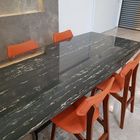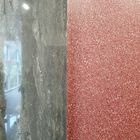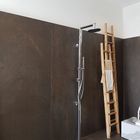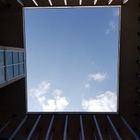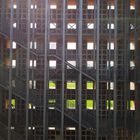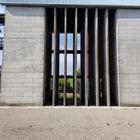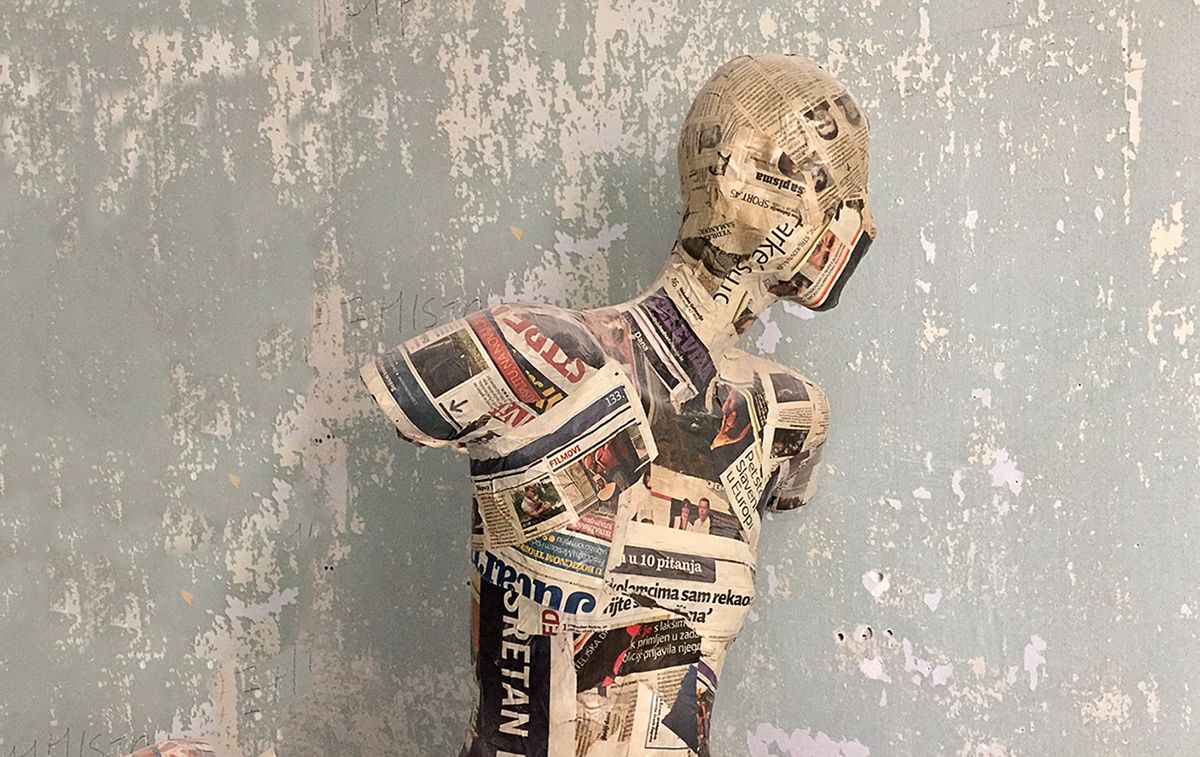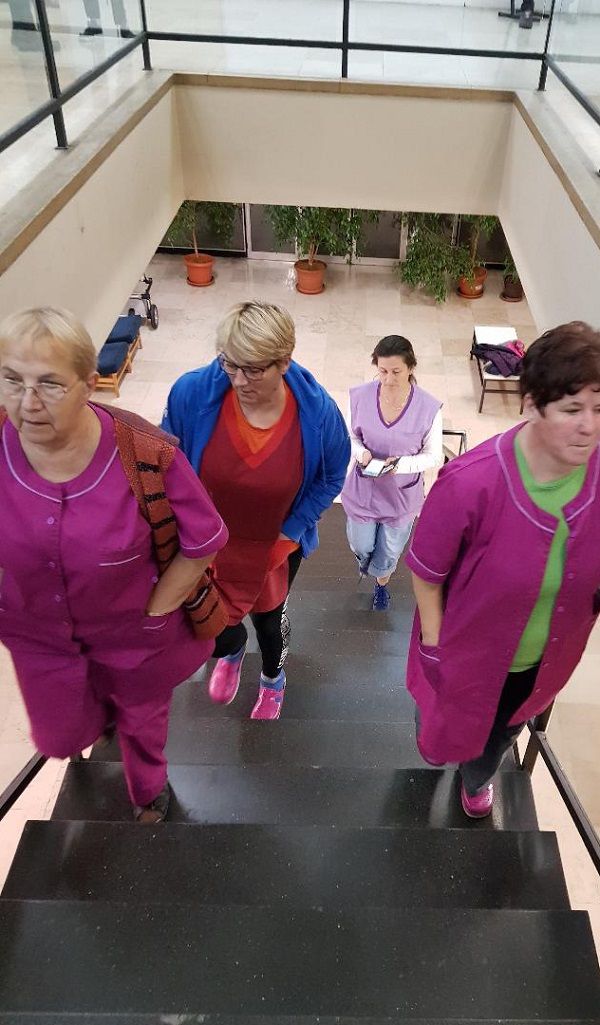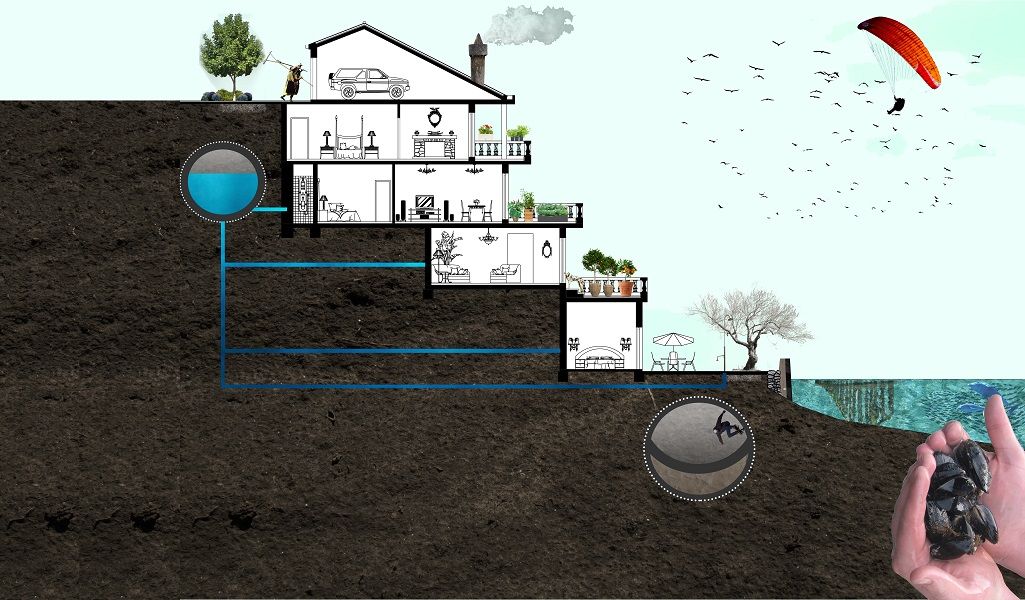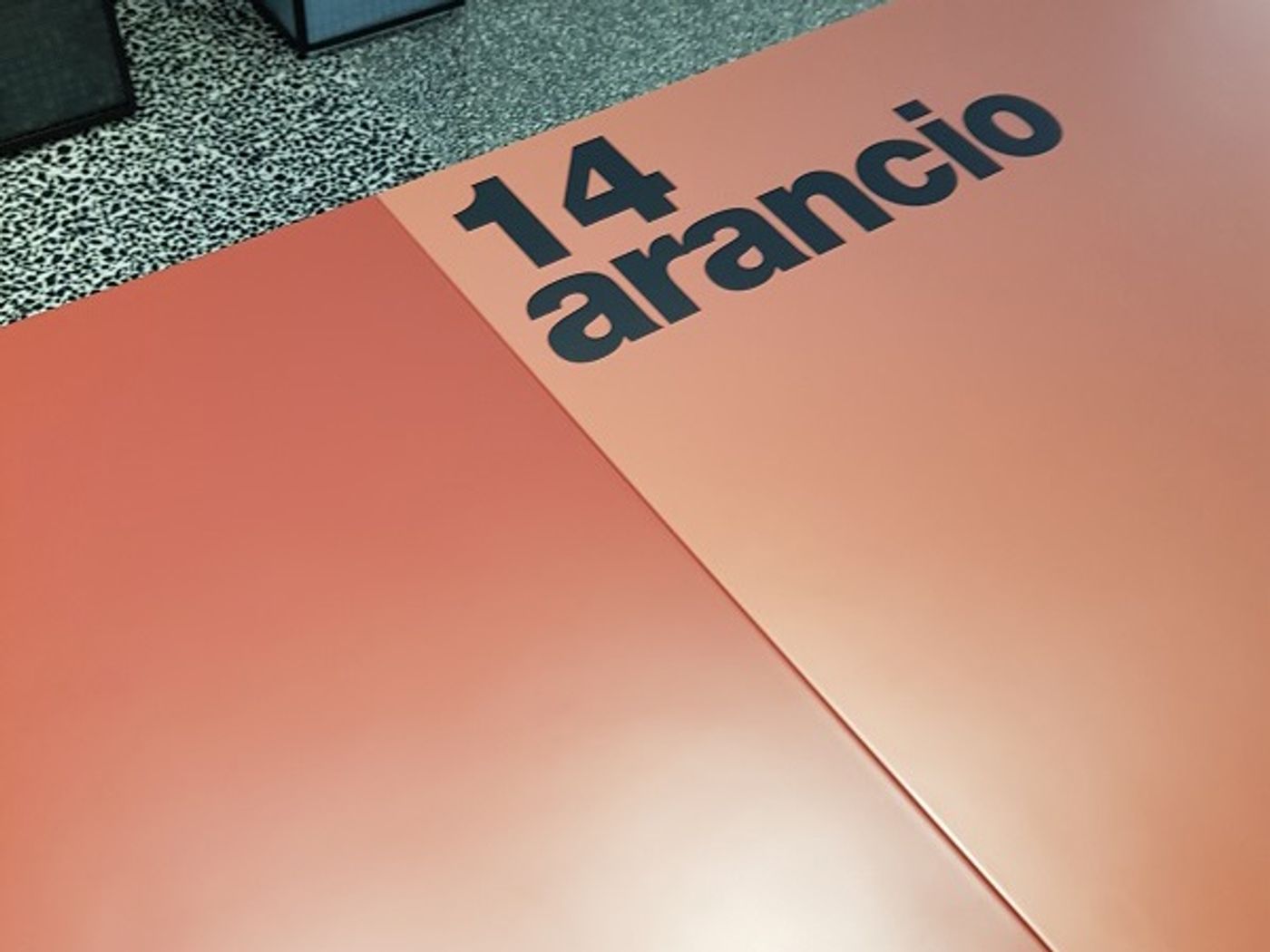
Put u Modenu
Vožnja talijanskom autocestom više nalikuje gradskoj. Na putokazima se izmjenjuju poznati toponimi - Venecija, Padova, Ferrara, Bologna. Vožnja do Modene se čini beskrajnom. Na dugačak (nije tako izgledalo na karti) put krenuli smo iz Splita, a na ljubazni poziv „Krekić-avangarda“, zadarskog zastupnika pločica „Florim“, naših omiljenih keramičara. Slučajno ili ne, poziv nam je stigao baš 23. maja, na Moranin rođendan, a kako je i moj rođendan bio nekoliko dana poslije toga, Mariana nam je putovanje servirala u formi rođendanskog poklona – romantično putovanje u Italiju za dvoje – u hodočašće gradu keramike. Stižemo u suton, direktno na večeru. Specijaliteti Reggio Emilije u pratnji dobrog (a kakvo bi bilo) talijanskog vina, pomiješanog s golemim umorom. Ne sjećam se svih detalja. Sutrašnji dan, rekli su nam, bit će naporan. Smješteni smo u Sassuolo, predgrađe Modene, grad keramike, kako su nam ponosno priopćili. Jedna keramička instalacija („Ovo je kao Luis Barragan, samo loše“ - dosta točno je primjetila Morana) usred kružnog toka, svjedoči o glavnoj industriji mjesta. Uz magistralu, sa obe strane puta jedna kraj druge – proizvodne hale – najveća koncentracija proizvođača keramike na svijetu! Razmišljam o nasljeđu etrurske civilizacije, repromaterijalima iz doline reke Po ili uzornoj „socijalnoj regiji“ Emilia – Romagna, modelu u koji su sa čežnjom gledale i najčešće neuspješno kopirale sve socijal-demokratske administracije posljeratne Zapadne Europe. Renesansna središta Italije, čija imena poznajemo najčešće iz Jansona, pretvorena u centre suvremene industrije, ali one fine, kako to umiju samo na Apeninima. Ponovno beskrajni autoput i prvo odredište, novootvorena tvornica velikih formata, u gradu znatno poznatijem po jednoj drugoj industriji, naime, u Maranellu. Naša tvornica nalazi se tik uz proizvodni pogon „Ferrarija“, priopćavaju ljudi iz „Florima“, opet ne bez ponosa. Grintavi arhitekti u holu prvo uočavaju lošu kvalitetu pločica. „U postolara su najgore cipele“ – kažu oni pomirljiviji.
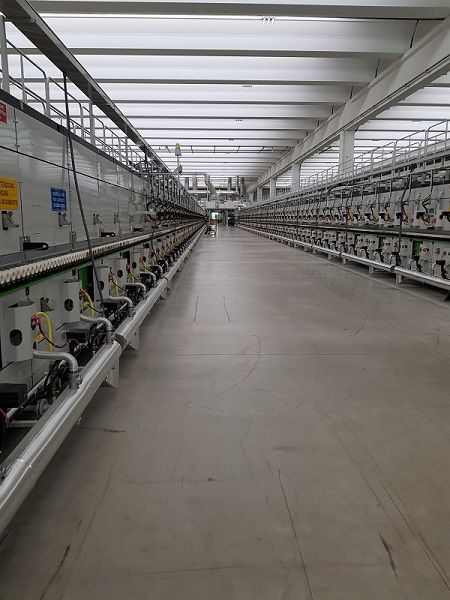
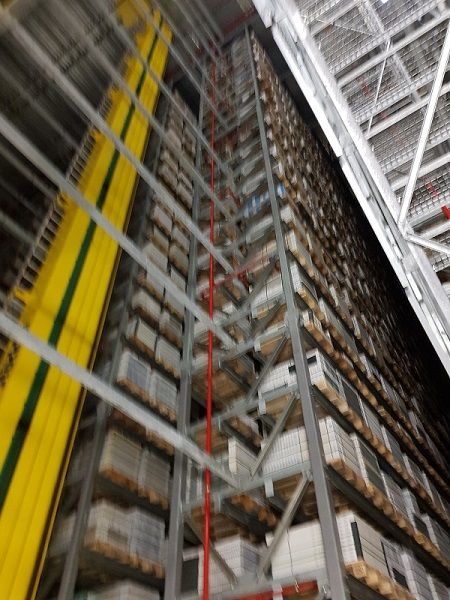
Sjećam se epizode Branka Kockice kada jedan kragujevački vrtić ide u posjet tada još moćnoj „Zastavi“. Da li zbog posjete tvornici per se, ili talijanskog backgrounda „zastave 750“, sve vrijeme mi se po glavi vrzmala ta davna TV-emisija. Od procesa do procesa - prešanja gline, nanošenja uzoraka, pečenja, promatrali smo to poput radoznalih klinaca. Koliko smo, na kraju krajeva, puta bili u nekoj velikoj – pravoj tvornici? Ja nijednom. Showroom nam je sljedeće odredište. Impozantan showroom, da ne bude zabune. Pridružuje nam se Valerio. „Ovog ne bi falila među miljun ljudi da je Talijan“ kaže jedna suputnica. Valerio je agent „Florima“ za sve zemlje ex-yu. I Albaniju pride. U svrhu uvjeravanja klijenata naučio je i jezik. Tokom obilaska kolekcija malo-malo bi čuli kako govori; „Ovo važno!“, „Pamti ovo!“. Kasnije su nam rekli da je najbolji agent cijele grupacije „Florim“, te da je prošle godine prodao milijon kvadrata pločica. Zvuči baš puno.
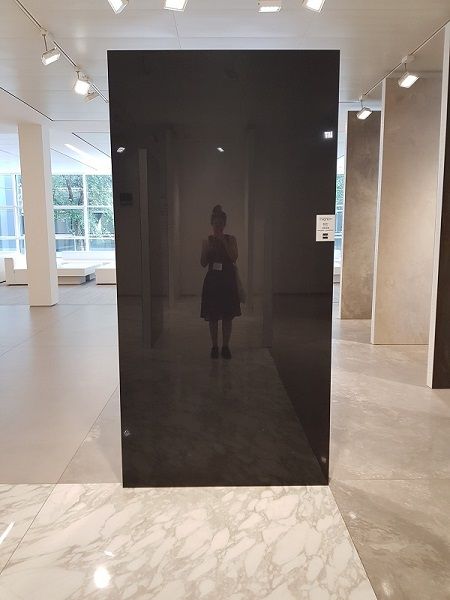
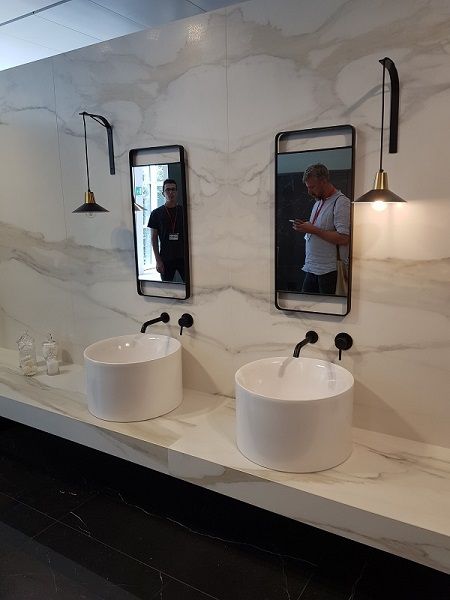
Uz stručno vođstvo i maternji jezik, dakle, obilazimo showroom. Morana je izbirljiva. Nakon dva sata razgledavanja i 5 linija (skupih, srednje skupih, industrijskih, dizajnerskih), pronalazimo nešto po svom ukusu. U čitavom spektru uobičajeno dobrog talijanskog dizajna, za oko nam zapinje kolekcija koju su dizajnirali – Austrijanci. Tevtonski. Minimalistički. Arhitektonski. Razmišljamo kako doći do Modene. Ne, još, kažu nam. Posjeta skladištu je obavezan dio programa. Skladištu, pobogu, mislim se. Ubrzo mijenjam stav. Po ogromnoj hali kruže utovarivači - roboti. Po šinama klize kompozicije vagona – platformi kojim se palete prevoze s jednog na drugi kraj hale. Uvode nas kroz vrata u drugi dio zgrade. Okrećemo pogled prema gore. Liftovi voze pakete prema gore, nalik backstage-u nekog teatra budućnosti. Nigde nema ljudi. „Roboti, nema čovika – gotovo je“, u jednoj rečenici distopijski sumira Morana.
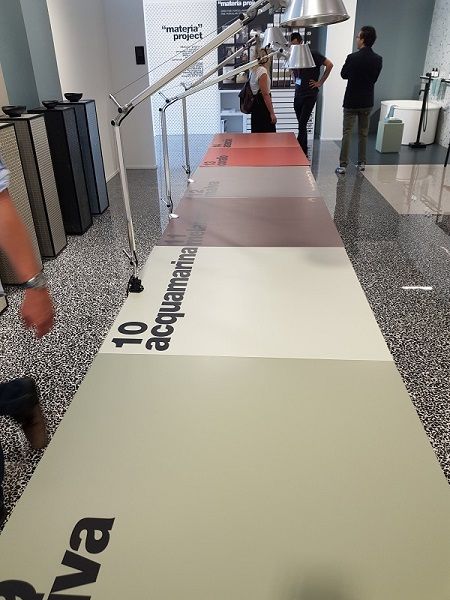
Nekada smo u Reggio Emiliji imali 5000 proizvođača sireva. Danas ih je 1300. Nekada je bilo svega par tvornica pločica. Danas ih je mnoštvo. Glas gospodina proizvođača parmigiana regiana ima gorak ton. Da li su pločice ubile proizvodnju čuvenog sira? Još uvijek ne. Kušamo sireve stare 12, 24, 36, 48 mjeseci. Čini se da smo uplovili u neslužbeni dio programa. Na blagajni je gužva. Sinergija dvije industrije.
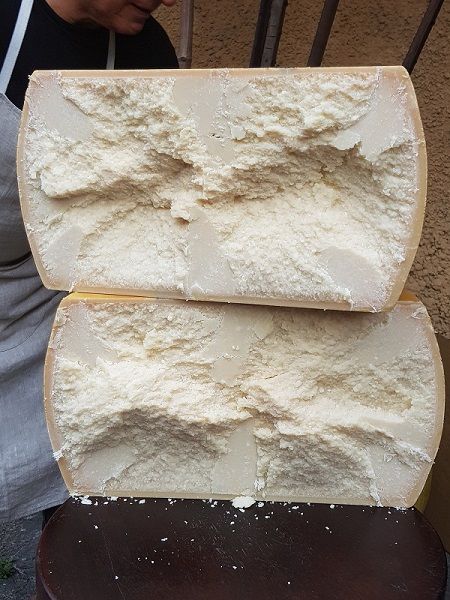
Ekipa iz „Florima“, a i Modenezi generalno, silno su ponosni na svoju auto-industriju. Tj. na auto-industriju koja je, eto, baš na sljedećoj parceli od naše. U tom svjetlu, završetak dana, prigodno su upriličili u restoranu „Mama Roseta“. „Tu dolazi Šumaher“. Na zidovima su, zaista, memorabilije svih znanih i neznanih vozača Formule 1. „Ajme, koji kič“, rekla je Morana. Na kvalitetu hrane nije bilo primjedbi. Posjeta gradu Modeni inicijalno nije bila planirana. No, čini se da su naša moljakanja urodila plodom. Oko 10 navečer naš kombi konačno stiže u centar Modene. Nakon što smo obišli sva predgrađa i industrijske zone, bio je i red. Nas par (Morana, Pave i ja) iskralo se iz grupe. Istražujemo grad. U kretanju koristimo stečena arhitektonska znanja. Tu je katedrala. Onda odmah iza mora biti glavni trg. A ono je pješačka zona koja nas vodi do drugog velikog trga, gdje mora biti kazalište. „Teatro Comunale Luciano Pavarotti“, uzgred budi rečeno. Svaki trg je kao iz udžbenika. Svaki ambijent - ugodan. Tako talijansko veče!
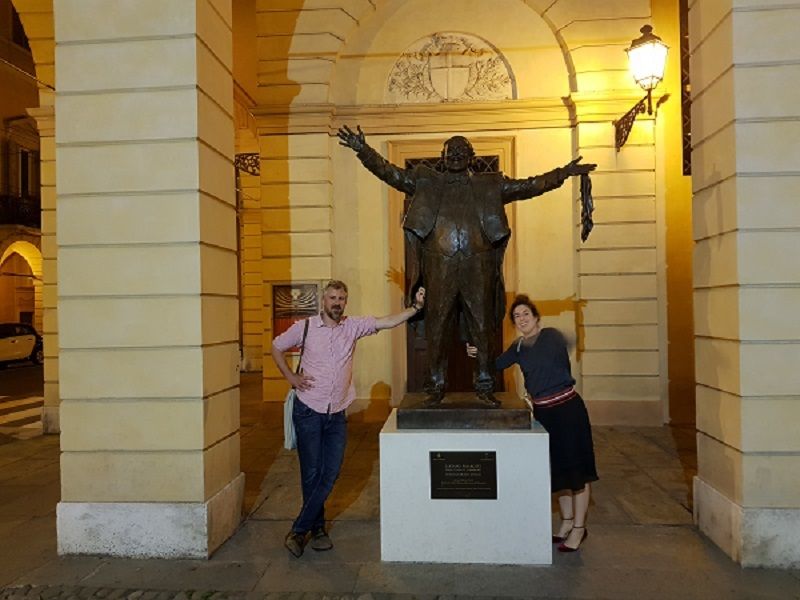
Na redu je povratak u Split. Iako, treba obići još jednu stvar. Mariana nam je već nekoliko puta poslala poruku: „Jeste li bili na groblju?“. U pitanju je naravno groblje San Cataldo Alda Rossija. Biser, štoviše jedno od djela u temeljima post-moderne. Ali one dobre, nekičaste post-moderne koja jedva da je prešla na našu stranu Jadrana. Momci iz „Florima“ pak imaju drugu ideju. I oni imaju još jednu stvar u planu. Muzej „Ferrarija“! „Kako ću reći da sam bio u Modeni, a da nisam otišao u Muzej Ferrarija“ – kaže najmlađi među njima, Marko. „Mi smo arhitekti, nismo muškarci u krizi kasnih srednjih godina“ prelomila je Morana u našem kombiju, nakon čega je u vozilu nastala neprijatna tišina. San Cataldo se sastoji od centralnog kubičnog volumena, crvenkaste prošupljene kocke te dugačkih paviljona nadsvođenih dvostrešnim krovovima koji ga okružuju. Ispred groblja, prema putu nalazi se veliko polje. Ovo je putopis, a ne arhitektonska analiza. A svaki od prisutnih arhitekata i ovako je formirao svoj osobni stav. Jak. Što je posrijedi? Ogled? Platonska analiza čistih formi? Grad mrtvih? Izgrađeni manifest post-modernizma? Groblje nas je dojmilo. U povratku, dobar dio puta raspravljamo o valjanosti ovog eksperimenta, o idejama vodiljama, o tome da li je u pitanju adekvatno posljednje počivalište. „Meni se dopada kao eksperiment“, rekla je Morana. Priče o vječnosti presječene su, konceptualno sjajno (iako nije bilo planirano), povratkom u materijalno, prolazno. Nimalo platonskom i filozofskom posjetom jednom od shopping rajeva regije Veneto. Da, treba li napomenuti, i tržni centar bio je u formi malog, stilski oblikovanog gradića. Primjedbi o kiču ovoga puta nije bilo. Tako je kako u konzumerističkom svijetu mora biti.
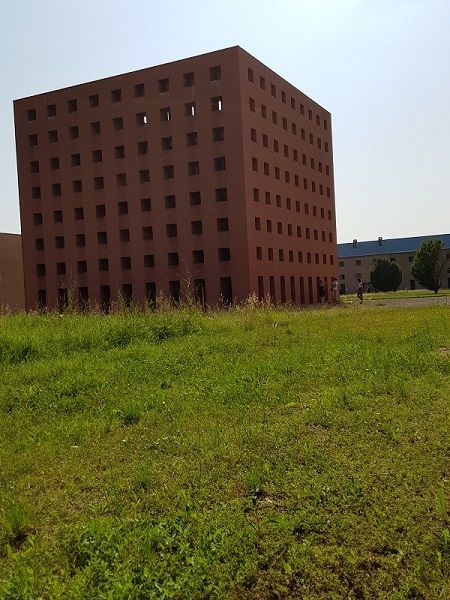
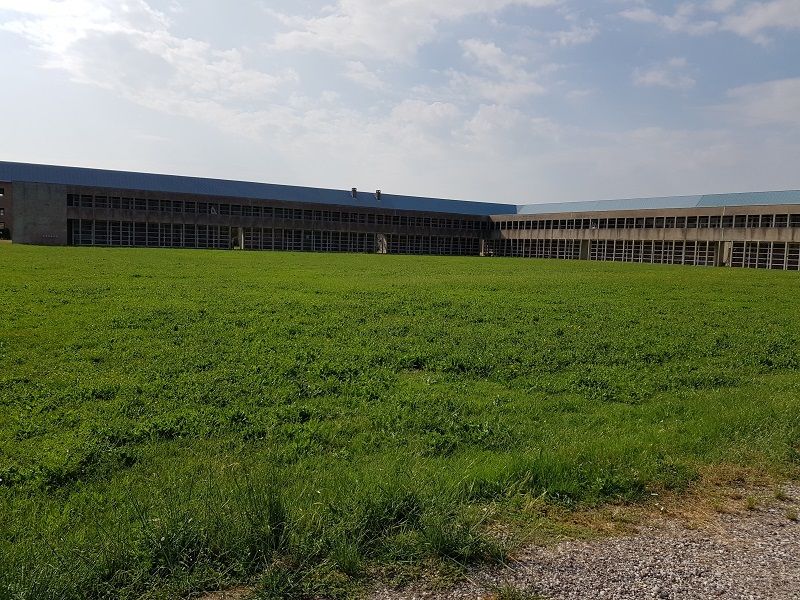
Povratak, kažu, traje kraće nego odlazak. Iz restorana „Putniku“ na Grobniku već smo bili nadomak Zagrebu i Splitu. „Kakav divan izlet“ , rekla bi Morana. *Hvala ekipi iz „Florima“ i „Krekić-avangarda“ na predivnom putovanju.
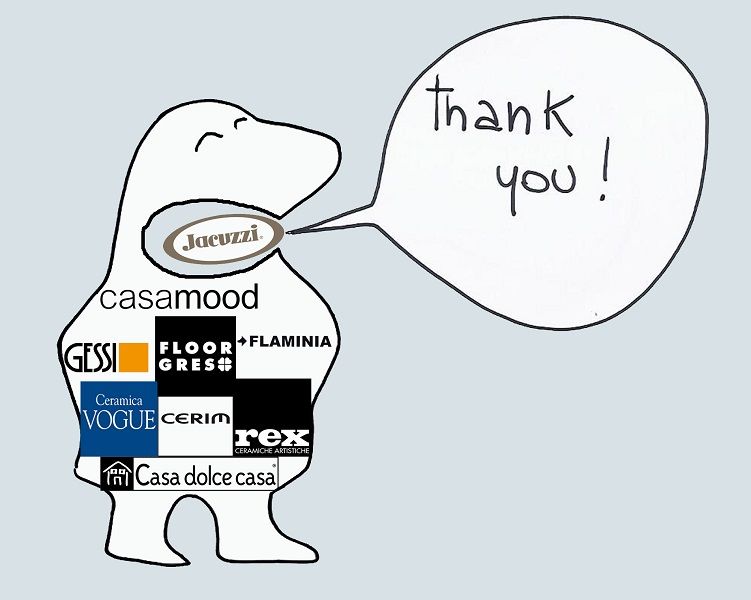
The ride on the Italian highway looks like a city one. The road signs display well-known toponyms - Venice, Padova, Ferrara, Bologna. The ride to Modena seems endless. We embarked on this long journey in Split (it did not look so long on the map), upon the kind invitation by "Krekić-avangard", the Zadar representative of the "Florim" tiles, our favorite ceramists. Coincidentally or not, the invitation was received on May 23rd - Morana's birthday. My birthday was just a few days away, so Mariana presented us this trip in the form of a birthday gift – „a romantic trip to Italy for two“ - the pilgrimage to the city of ceramics. We arrived in sunset, directly to dinner. The cuisine of Reggio Emilia accompanied by a good Italian wine, mixed with an extreme tiredness. I don't remember all the details. The next day will be a long one, they told us. We were located in Sassuolo, a suburb of Modena, the city of ceramics, as they proudly announced. A ceramic installation ("This is like poor man's Luis Barragan" - commented Morana quite precisely the ceramic installation in the midst of the circular flow, the memorial to the main industry of the city. Along the main road, on both sides, the production halls were lining up one after the other- the largest concentration of ceramic producers in the world! Wondering what brought all of these companies to this tiny town…the heritage of Etruscan civilization, the materials from the Po river valley, or the model "social region" of Emilia-Romagna, a model looked upon, most often unsuccessfully, by all the social democratic administrations of the post-war Western Europe. The Renaissance centers of Italy, whose names we know mostly from the Janson's „History of Art“, have been turned into centers of modern production, exquisite kind of indrustry – the italian way. An endless (once again) highway leads us to our first destination, a newly opened large-format tile factory, in a city much more famous for another industry, namely - to Maranello. Our factory is located right next to the "Ferrari" production plant, people from "Florim" underline, once again not without pride. The nibbling architects first notice the poor quality of tiles placed in the reception area. "The Cobbler's children has no shoes" – the more sympathetic ones remark. I remember the episode of Branko Kockica, the famous childen's TV show from the eighties, when a Kragujevac kindergarten went to visit then still powerful "Zastava" car-factory. Whether because of a visit to the factory per se, or the Italian background of the "zastava 750" car model, the idea of this show was hovering in my head during the whole visit. From process to process – clay pressing, applying samples, baking the tiles - we watched all of them like curious kids. How many times have you been to the real factory, anyway? Me – not even once. The „Florim“ showroom was our next destination. An impressive showroom, I have to state. At this point, we were joined by Valerio. "I would recognise this guy is Italian among million of others", said a fellow-traveler. Valerio is the agent of "Florim" for all the post-yugoslav countries and Albania. In order to persuade the clients, he even learned the language. During the tour, we could hear him shouting: „Ovo važno!“ „Pamti ovo“ ("This is important!", "Remember this!"). Later they told us that he is the best agent of the whole "Florim" group, selling a million square meters of tiles just last year. Sounds a lot. With the professional guidance and explanation on our mother tongue, we circled the showroom. Morana is picky. After two hours of sightseeing and five collections of tiles (expensive, medium-expensive, industrial, tiles especially made for designers), we found something according to our taste. In the whole range of a proverbially good Italian design, the tiles we liked most were designed by - Austrians. Tevtonic. Minimalist. Architectural. We are thinking of the ways of getting to Modena. No, yet, they tell us. A visit to the warehouse is a mandatory part of the program. Warehouse, my godness… Soon, I change my mind. The huge warehouse is patroled by robot - loaders. There is a little railway track inside the building and wagons - platforms transport packages of tiles from one end of the warehouse to the other. In the other part of the building the elevators drive packages up. It looks like the backstage of a theater of tommorow. No people. "Robots, no humans – we are doomed", summarized Morana the dystopia we saw. We once had 5,000 cheese producers in Reggio Emilia. Today there are 1300. There used to be only a couple of tile factories. Nowadays - there are countless. The voice of the producer of the parmigiano regiano has a bitter tone. Did the tiles kill the production of the famous cheese? Not yet. We tasted 12, 24, 36, 48 months old cheeses. It seems we have sailed into an unofficial part of the program. There's a crowd in the cashier. Synergy of the two industries… The "Florim" team, and Modenesi in general, are very proud of their car industry. The car industry that is, right on the next plot to ours, as the people from „Florim“ proudly mentioned. In this regard, the end of the day was arranged in the "Mama Roseta" restaurant. "Schumacher used to visit this place", they said. The memorabilias of all known and unknown Formula One drivers are, indeed, hanging on the walls all over the restaurant. "Ajme, what a kitsch", said Morana. No observations on food quality, though. The visit to the city of Modena was not planned. But it seems that our pleasures have been heard. At around 10 P.M. our van finally arrived at the center of Modena. After we visited all the suburbs and industrial zones, it was about time. The couple of us (Morana, Pave and I) separated from the group. We were exploring the city, using the acquired architectural knowledge. There's a cathedral. The main square should be immediately behind it. And there must be the pedestrian zone leading us to the next big square, where the theater is. "Teatro Comunale Luciano Pavarotti", by the way. Every square is like in an architectural textbook. Every ambient - pleasing. The evening - so Italian! It's time to return to Split. Although, one more thing needs to be done. Mariana has already sent us couple of messages with the following text: "Have you been to the cemetery?". The cemetery we are talking about is, of course, The San Cataldo Cemetery designed by famous Aldo Rossi. The pearl, moreover, one of the foundation buildings of the post-modern movement. The good one, the kind of post-modern that barely crossed the Adriatic. The guys from "Florim", however, had another idea. They also pllaned one more activity before we depart - the "Ferrari" museum! "I won't be able to say I was in Modena without visiting the Ferrari Museum," the youngest among them, Marko, lamented. "We are architects, not the men in the late middle age crisis", Morana cut off the discusion in our van, after which the unpleasant silence arose in the vehicle. San Cataldo consists of a central reddish cubic volume and long pavilions with gable roofs surrounding it. There is a large field in front of the cemetery. This is a travelogue, not an architectural analysis. Each of the present architects formed his or her own attitude of the building anyway. Strong attitude, surely. What is it, after all, this building? An experiment? Platonic analysis of pure forms? City of the dead? Built manifest of post-modernism? The graveyard impressed us, in any case. On the way back, we discuss the validity of this experiment, it's guiding ideas, whether is it adequately build for the resting place. "I like it as an experiment", Morana said. The stories of eternity were cut, conceptually great (though not planned), coming back to material, transient; by an absolutely non-platonic and non-philosophical visit to one of the shopping districts of the Veneto region. The shopping mall was, it's worth mentioning, in the form of a small, stylishly shaped rennaisance town. There were no complaints about the kitsch this time. It's the way it should be in the consumer society. The return, lasts shorter than the departure, so they say. From the "Putniku" restaurant on Grobnik we were one step away from Zagreb and Split. "What a wonderful trip," concluded Morana. * We would like to express our gratitude to the teams of both "Florim" and "Krekić-avantgarde" for this wonderful journey.


